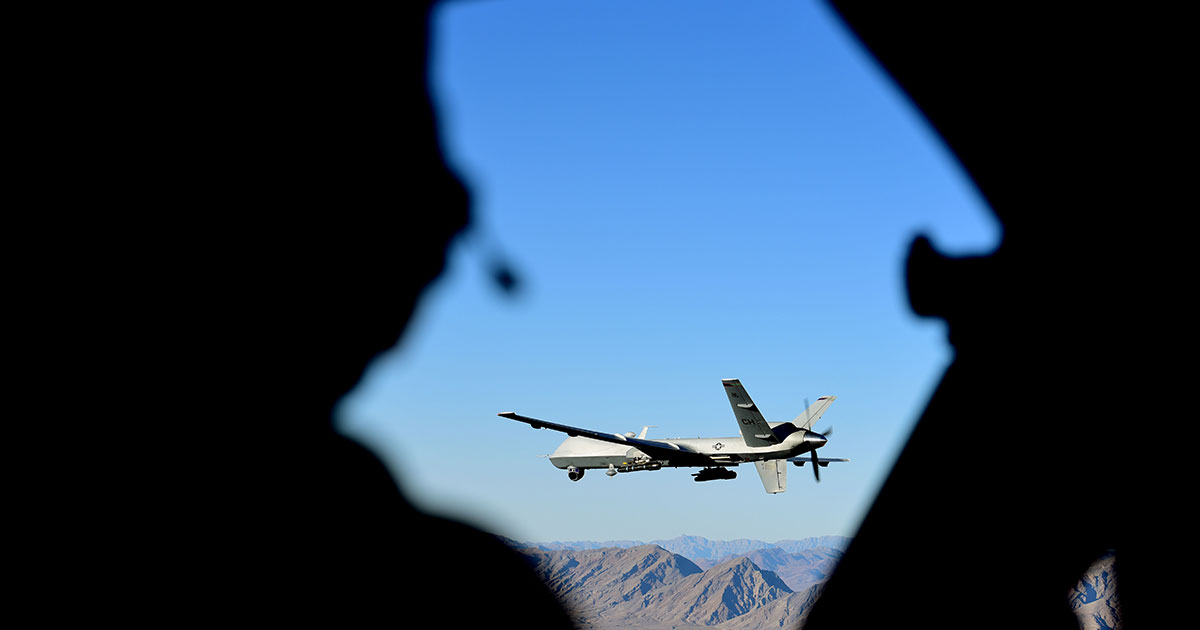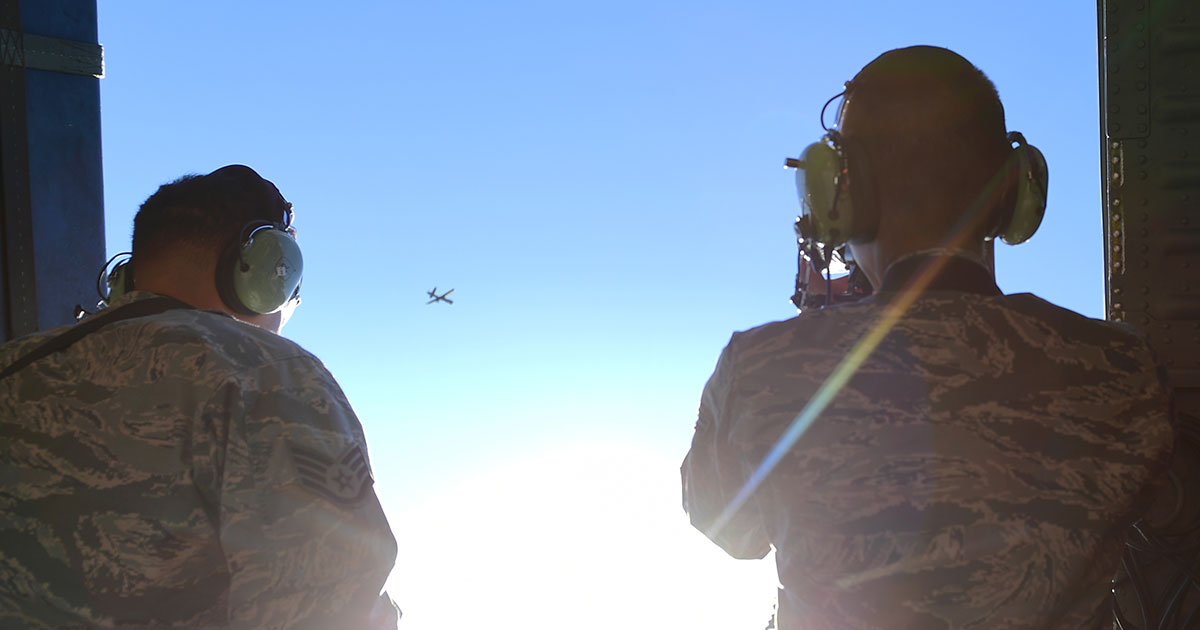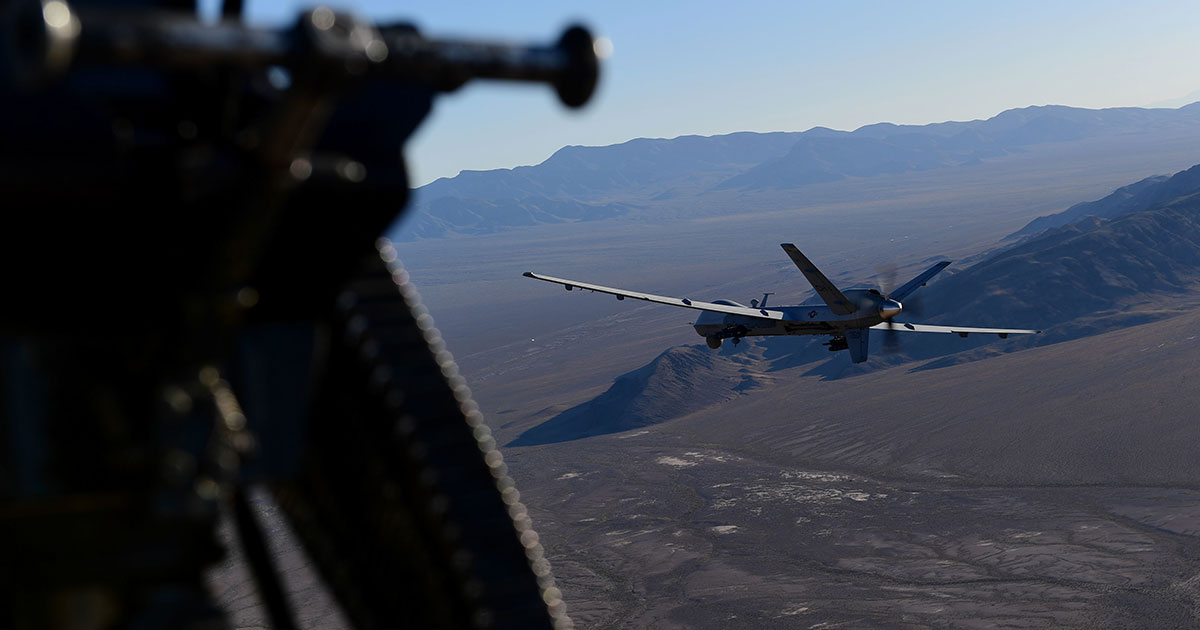Send UAS, Not Troops, Into the Danger Zone

High-quality intelligence, surveillance and reconnaissance is essential for the United States and its allies – but gathering it can be dangerous work.
In more than a dozen incidents around the world over the past two years, and many others before that, irresponsible pilots have threatened, harassed, damaged and, in some cases, destroyed American or allied ISR aircraft, often placing the pilots and air crews inside in extreme jeopardy.
In 2022, Russian fighters nearly collided with a U.S. Navy maritime patrol aircraft no fewer than three times in 24 hours. Just days before Christmas that same year, a Chinese J-11 fighter slashed within about 20 feet of a U.S. Air Force RC-135 Rivet Joint surveillance aircraft.
Mainstream press accounts sometimes quote foreign governments in describing these American aircraft as “spy planes,” but that’s wrong. These are not secret aircraft on clandestine missions. These are large, conventional, well-labeled aircraft operating openly in international airspace, often over international waters. Their operations are overt, legal and proper.
This doesn’t mean they’re not also risky – especially when ISR aircraft become the victims of petulant episodes involving regional powers. They aren’t only limited to American aircraft, either.
In summer 2023, harassing Russian fighters forced French Rafale fighters to change course near the Iran-Syria border following a “non-professional interaction,” as the French Air Force described it. And in an incident that could have had grave, widespread implications, a Russian fighter attempted to fire on a British RC-135 aircraft over the Black Sea. Fortunately, the Russian missile malfunctioned.
Episodes such as these highlight the enduring importance of mitigating risk for those tasked with collecting ISR.
A large, airliner-derived ISR aircraft is a national treasure. The Air Force only has a small number of RC-135 Rivet Joints, for example, and each one is an exquisite example of technical collection hardware. But set that aside for a moment and recall that an RC-135 carries a flight crew of three pilots, two navigators and a mission crew including three electronic warfare officers, 14 intelligence operators and four inflight maintenance technicians. The aircraft can accommodate as many as 30 people. No matter the monetary costs of the airplane and its systems, the human value is incalculable.
High-quality, relevant ISR is worth the cost and the risks – but unmanned systems give the Air Force choices about using its resources strategically.
Taking pilots and crews out of danger

Unmanned systems haven’t been exempt from aggressive powers’ aerial horseplay – in fact, sometimes it feels like they’ve borne the brunt of it. In Syria, Russian fighters have harassed U.S. Air Force MQ-9 Reaper aircraft taking part in ISR or counterterrorism missions there as part of the international campaign against the Islamic State.
And most infamously, in the spring of 2023, Russian fighters collided with an MQ-9 over the Black Sea following an escalating campaign of abuse that resulted in a loss of the aircraft. Given the growing danger to ISR missions around the world, an aircraft loss might have been almost inevitable.
What isn’t inevitable, however, is that an aircraft loss must involve a human loss.
The Black Sea crash showed the value of giving American and allied commanders the option of sending an aircraft on a dangerous mission without also imperiling the life of a pilot. The crash didn’t require a big search and rescue effort in contested waters, or raise the prospect of an American aviator falling into the hands of a hostile power. The U.S. Air Force simply wrote off the aircraft and continued its work.
What’s also helpful for the United States and its allies are the growing ISR and other mission capabilities of the Reaper or its siblings including the Gray Eagle 25M or the MQ-9B SkyGuardian. These aircraft have extensive built-in sensors the provide high-definition, real-time sensing and collection of various kinds, but they also can take on a number of specialized payloads to extend their reach or their capabilities.
The Scalable Open Architecture Reconnaissance pod, for example, provides long-range detection, identification, and location of radar and communication signals of interest. SOAR enables MQ-9 or other aircraft operators to provide standoff surveillance—seeing threats before threats can see the aircraft—and communicate actionable intelligence. The system leverages significant U.S. government technology investments in strategic intelligence, surveillance, and reconnaissance systems to provide a low-cost, widely deployable capability.
Another potent new payload is the Sledgehammer pod, which enables communications denial and information operations. From the wing of an unmanned or manned aircraft, Sledgehammer is designed to simultaneously deny enemy communication networks, disrupt command and control, and deliver information operation messaging. This one-of-a-kind pod augments low-density, high-demand electronic attack assets and supports both legacy and modern communication bands, strengthening persistent information dominance and spectrum warfare on the battlefield.
Other payloads help unmanned aircraft augment communications, improve sensing or better defend against anti-air systems.
Versatile applications in hazardous conditions

Although combat zones may be the best-known places where unmanned aircraft operate while providing this kind of safety, there are many other hazardous environments where they also excel.
They help fight wildfires by providing constant surveillance, communications and other services. They help with recovery following severe storms, floods or other disasters. When the conditions are dangerous, or the operating areas are rough or inaccessible, aircraft such as the MQ-9A Reaper, the Gray Eagle 25M or the MQ-9B SkyGuardian are ready to go in.
In the case of MQ-9B, the aircraft was purpose built to operate in virtually any weather, including tough Arctic conditions. These are some of the most inhospitable environments on earth, and yet they’re only growing in importance as more areas become navigable for ships and nations compete for influence. This means that responsible powers must keep tabs on what’s taking place with ISR. Doing so with human-crewed aircraft doesn’t only pose risks for those crews – what if they crash on the ice, or in an isolated stretch of ocean – but requires hardship deployments for them and support crews and the search and rescue units that also would be assigned in the far north. Unmanned systems solve all this.
What’s more, upgraded onboard systems also can take advantage of new satellite constellations, including those in low earth orbit, and provide network links in order to operate anywhere on Earth.
Previously, unmanned aircraft flown via satellite couldn’t go above a certain line of latitude because there wasn’t sufficient coverage from space. MQ-9 is the first, as it has proven with test flights taking it far north over Canada and Alaska. The new aircraft, supported by new systems, are capable of true pole-to-pole coverage, unlocking huge new areas of operation.
Among the critical areas for ISR in the Northern Hemisphere are those within the Arctic Circle, where increasing numbers of navigable waterways are bringing a competition for trade, resource exploitation, fishing, security and more.
Even though these are cold, harsh and remote areas, the United States and its allies must keep watch, in the way they conduct ISR in other vital areas around the world. The right way to do that is with unmanned aircraft.